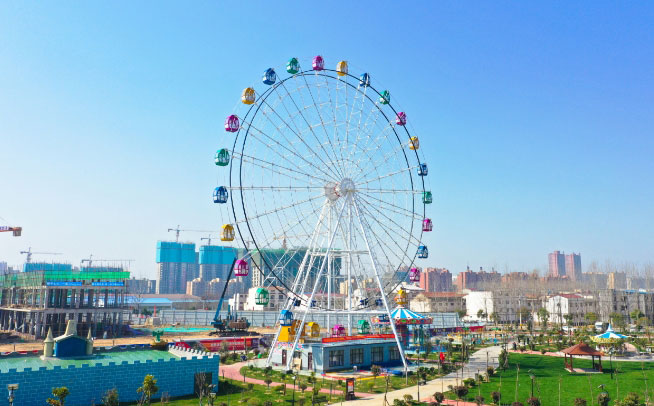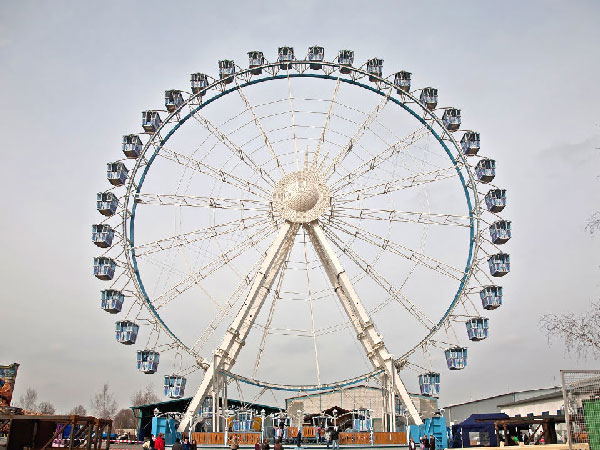The Ferris Wheel Ride is one of the popular amusement park rides which features a big vertical wheel and a place for riders to stand or sit evenly spaced around the exterior circumference. When in operation, this ride revolves around the horizontal axis, where the people on the ride are lifted or lowered as they move around the vertical wheel (in a circle). Once the ride comes to a stop, the riders on the platform or seats at the bottom part of the ride (ground level) will exit the ride first.
The ride is then revolved until the following platform or seat has reached ground level, so the next set of riders can get off the ride. Once all the riders have exited the ride, new riders will take their place. Even though the name “Big wheel” was not in use until the 1890s, the invention of this wheel has formed a fond part of many human festivities over 100s of years, this is different from the other popular ride in the amusement park and theme park, roller coaster for sale.
What Materials Are Used To Manufacture The Ferris Wheel Ride?
Due to the Big wheel’s unique design, the ferris wheel rides manufacturer fabricates the majority of the parts and components. Steel is one of the primary raw materials that will be used for making the chassis, trailer, wheel spokes, wheel cross members, and wheel support towers. Various steel structural shapes are typically used which include round tubing, square tubing, wide-legged beams, and channels. Diamond tread aluminum plates are generally used for the operator platform and exit and entrance walkway.
Aluminium is also a common material used for making the drive rims and the seats. Aluminium angle stock is rolled out to make the drive rims which are then attached to spokes to create a big circle of around 3 m/10ft (smaller in diameter), to the wheel’s exterior rim. Two rubberized drive wheels then press against these drive rims from either side, which causes the wheel to rotate.

This application requires a metal such as aluminium due to the friction caused by the drive wheels that would otherwise remove any paint present on the rims, which would lead to bare steel. If steel was used for this application, it would also rust.
The cushions that are used for the seats in the typical Ferris Wheel use self-skinning polyurethane foam. You can check the video to get more about the ferris wheel ride. This is a material that creates a smooth, solid skin for the outside of the seat, while the interior features a comfortable and compressive foam. Other common materials used include phenolic plastic in certain electrical components and nylon for the bushings.

The support cables used inside the structure of the wheel might feature a cover made out of plastic to protect these parts from outdoor elements and for appearance. Electrical rings that are designed to carry power to the lights that are usually positioned along the spokes that rotate are made from copper, while the brushes are made from carbon, which provides the rings with power.
In some cases, a few of the wheel components may be outsourced from another manufacturer of amusement rides and then installed onto the ride once it is constructed. These often include the tires, brakes, axles, and wheels attached to the trailer. Other types of purchased components can also include electrical cables and wires, electrical sockets and light bulbs, and electric-drive motors.